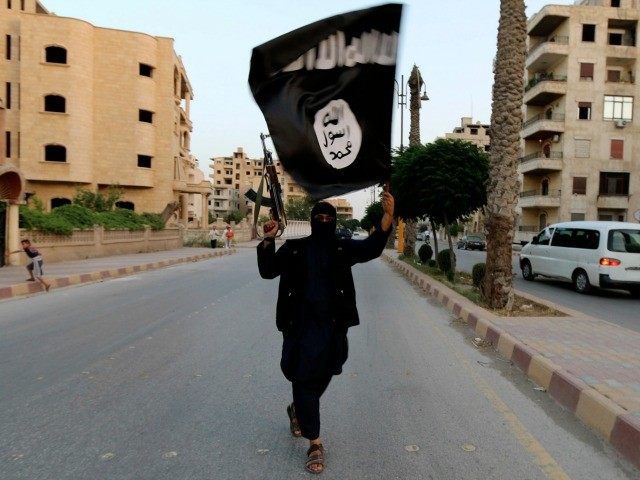The U.S. military in Afghanistan is stepping up its fight against the growing Islamic State branch in the Afghanistan-Pakistan region, vowing the defeat the jihadist group this year, Voice of America (VOA) has learned.
Since he took office, President Donald Trump has been ramping up military operations against both the Islamic State, also known as ISIS and ISIL, as well as al-Qaeda, particularly in Yemen.
“We stand confident that the new U.S. administration under President [Donald] Trump will remain strategically engaged and continue its support,” declared Afghanistan’s Foreign Minister Salahuddin Rabbani during a recent appearance at the Atlantic Council in Washington.
VOA spoke to American Navy Capt. Bill Salvin, the spokesperson and director of public affairs for the U.S./NATO-led coalition in Kabul, about America’s efforts against the Islamic State branch in Afghanistan, known as the Khorasan Province (ISIS-K).
“Our goal in 2017 is to defeat ISIS-K in Afghanistan,” Capt. Bill told VOA.
“In 2016, we believed that year began with about 3,000 or so ISIS-K members in about 12 districts in southern Nangarhar,” revealed the U.S. military spokesman. “Right now, we believe there are about 600 ISIS-K members in two or three districts in southern Nangarhar.”
The U.S. military has identified the eastern opium-rich Afghanistan province of Nangarhar, located on the country’s border with Pakistan, as the stronghold and base of attack of the Islamic State branch in the region, known as the Khorasan Province (ISIS-K).
Khorasan is an ancient name for a region that covers Afghanistan, Pakistan, Iran, parts of India, and other areas of Central Asia and Persia.
Despite the loses the ISIL-K has suffered, American Gen. John Nicholson, the top commander of U.S. and NATO forces in Afghanistan, recently told lawmakers ISIL-K has “shown an ability to conduct attacks in Kabul and elsewhere in the country.”
The Islamic State has claimed various major attacks in Kabul, including the March 8 massacre at a hospital that left at least 31 people dead.
“Analysts caution that U.S. and Afghan officials may be overly optimistic when speaking of containing IS’s spreading influence in Afghanistan,” notes VOA.
In October 2016, Gen. Nicholson said one of the primary goals of the Islamic State (IS) was to establish a caliphate on Afghan soil.
“Right now we see them very focused on trying to establish their caliphate, the Khorasan caliphate, inside Afghanistan,” Gen. John Nicholson. told NBC News.
Although ISIL-K has lost hundreds of fighters, they have plenty of terrorist groups in the region to replenish their ranks.
According to Nicholson, the Afghanistan-Pakistan region is home to the largest concentration of U.S.-designated terrorist groups — 13 in Afghanistan and 7 in Pakistan.
“Ultimately, we should applaud U.S. efforts to cut down the presence of IS fighters in Afghanistan,” Michael Kugelman, a South Asia specialist at the Woodrow Wilson Center in Washington, told VOA. ”But the broader problem is the ideologies of hate that keep IS strong. Taking aim at the ideological drivers of IS will be very difficult.”
“The Afghanistan-Pakistan region is a magnet for militancy, and there’s no reason why the hundreds of IS fighters that have been lost won’t be replaced,” he added. “There are deeper issues that need to be addressed — such as why IS managed to develop a presence in Afghanistan in the first place — and these are issues that can’t be addressed by the U.S. military.”

COMMENTS
Please let us know if you're having issues with commenting.